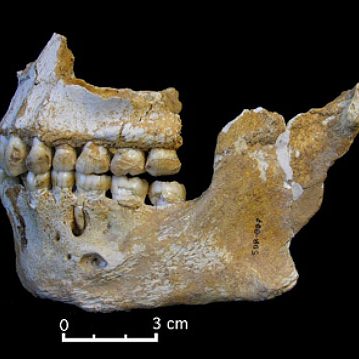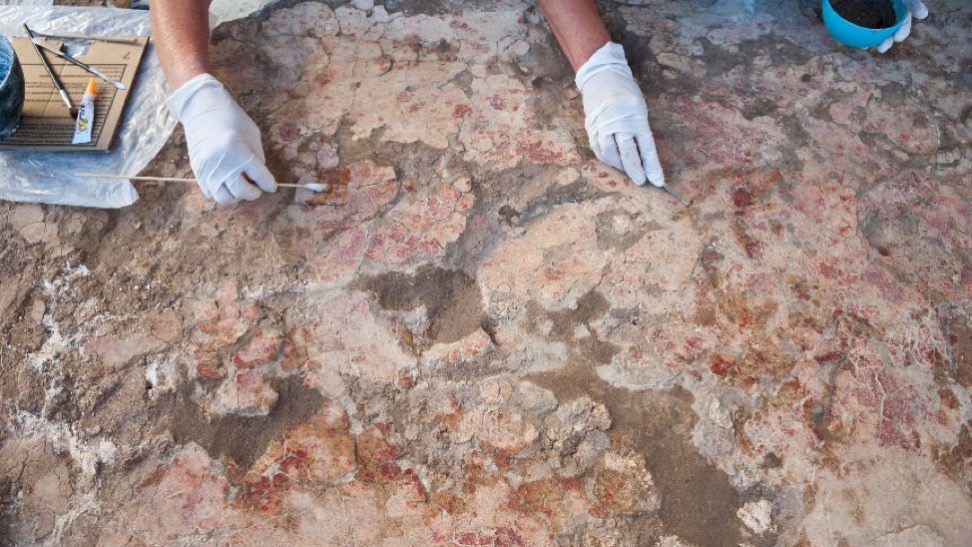
Paleobiology and Evolution of the Neanderthals of El Sidrón
The research carried out with the El Sidron fossils has effectively contributed to the change in the image of Neanderthals in today’s society. From being seen as a primitive and inferior species to ours, today we perceive the Neanderthals as a human species with its own evolutionary processes and in many cases parallel to those of the Homo sapiens lineage. At present, the fossils of El Sidrón constitute the most complete collection of Neanderthal remains found in the Iberian Peninsula and has become one of the most significant on a global scale. The 13 of El Sidron.

Period
Upper Pleistocene. After the use of various dating techniques, it is possible to conclude an age of nearly 49,000 years.
Institution
Consejo Superior de Investigaciones Científicas.
Web and social networks
https://www.mncn.csic.es/es/quienes_somos/antonio-rosas-gonzalez
Principal Investigator(s)
Antonio Rosas González.
Palaeoanthropology Group. Museo Nacional de Ciencias Naturales, CSIC
Location
Cave of El Sidrón, located in the council of Piloña, Asturias
LOCATION
RESULTS
The El Sidron fossil collection consists of more than 2600 inventoried, cleaned and restored specimens. Thirteen individuals have been identified, of which seven are adults (three males, four females), three adolescents, two juveniles and one child.
Today, the El Sidrón fossil collection and the diversity of analyses developed around it constitute an obligatory reference at an international level for the understanding of the paleobiology and evolution of the Neandertals. El Sidrón has contributed with the best collection of Neanderthal fossils (Homo neanderthalensis) in this geographical space and one of the best in the world.
- Identification and characterization (sex and age interval) of the 13 individuals that make up the sample. Assignment and individualization in some cases of the postcranial elements of each individual, especially remarkable in the individual Juvenile El Sidrón J1, achieving a partial skeleton. Many aspects of the paleo-biology of El Sidron individuals, as well as Neanderthals in general, have been revealed through the detailed study of different skeletal systems, such as: aspects of diet, manual laterality, acquired and congenital pathologies, developmental biology and skeletal growth/nervous system, paleo-neurology, determination of height and weight, functional/metabolic aspects, differences between Neanderthal populations, etc.
- Cultural/behavioral aspects have also become apparent: cannibalism, medication, use of medicinal plants, postural habits, division of labor by both sex and age classes, use of toothpicks and herbs for oral hygiene, use of the mouth for non-chewing activities, use of bitumen possibly to muddy stone tools, etc.
- Through the analysis of mitochondrial DNA of 12 of the individuals, something unprecedented until that moment has been achieved: the establishment of kinship relationships between the members of this human fossil group, with behavioral/cultural implications in the Neanderthal world. It was proposed, and is accepted by the international scientific community, a model of patrilocality (change of residence of women and permanence of men in the parental sphere) as an eco-reproductive strategy of Neanderthals.
PICTURES
- New study suggests King Tut’s tomb artifacts are linked to mysterious Osiris ritual (Archaeology News 29/03/2025) - 10 April, 2025
- Many Medieval Manuscripts Found to Be Bound in Seal Skins from the Arctic (La Brújula Verde 09/04/2025) - 10 April, 2025
- Bronze Age cymbals unearthed in Oman reveal how music united prehistoric Persian Gulf cultures (Archaeology News 08/04/2025) - 9 April, 2025

























